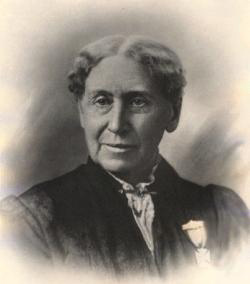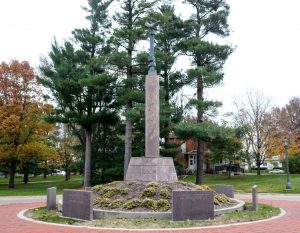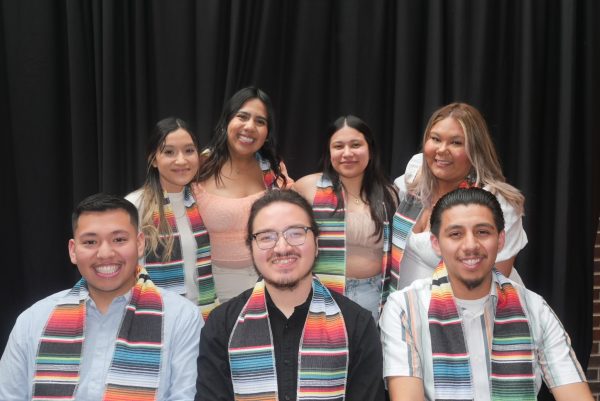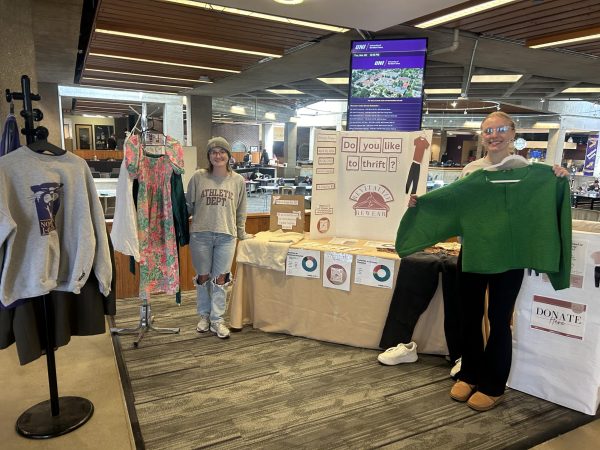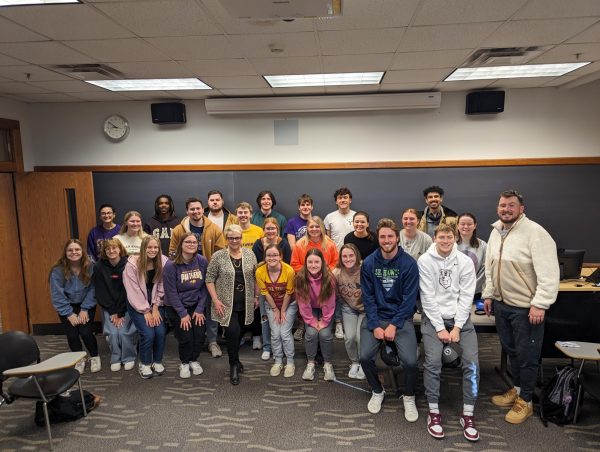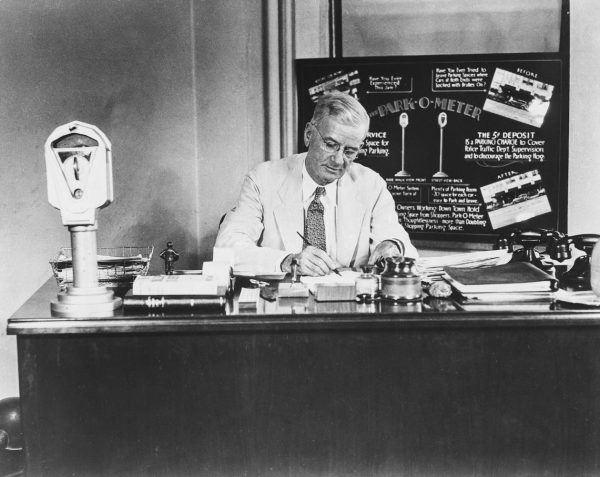A Pioneer Forgotten
Nov 9, 2017
She was an innovative Union relief worker, leader in women’s pension law and starter of several Iowa orphanages. A tablet on the monument dedicated to her reads, “She combined a high degree of courage, a strong sense of social responsibility and an independence rare of the woman of that day.”
Annie Turner Wittenmyer (1827-1900) was commemorated with a monument on UNI’s campus in 1996. The statue in her name is located outside of Lang Hall, near where Wittenmyer helped erect a Civil War orphanage in 1869 that would later become Central Hall, the first building on UNI’s campus.
Martha Reineke, professor of philosophy and world religions, was on the Women’s Studies Advisory Board, which came up with the idea to dedicate part of UNI’s campus to Annie Wittenmyer.
“At the time, state law required that one percent of government building budgets go to art, which is why most buildings at UNI have sculptures near them,” Reineke said. “The artist was from Dubuque, and his vision was to have a traditional monument appearance to go with Lang, but also to create contemporary art to capture her courageous spirit, as she really defied a lot of odds. He wanted people to think of her soaring spirit, so he did a contemporary version of the Winged Victory.”
Reineke went on to discuss some of the odds Wittenmyer overcame in her day. According to Reineke, women’s organizations contributed food, clothing and bedding during the Civil War. Almost every community would have a “women’s society” that did this.
“The governor at the time, [Samuel] Kirkwood, decided he would form an aid commission to send supplies to troops,” Reineke said. “He appointed 13 men and completely ignored the fact that women all over the state were doing this and had a network already set up. He told women they could continue to fundraise but to send the money to his commission. Women were outraged. He was particularly negative toward Wittenmyer, a widow at the time. She had to be very tough.”
Wittenmyer continued to do the work the women started under the U.S. Christian Commission, as a state representative of Iowa to this federal organization.
Eventually, Kirkwood’s commission gave up.
“They realized women could do it a lot better,” Reineke said.
When Wittenmyer worked with the U.S. Christian Commission, she traveled to hospitals for the troops.
“She realized soldiers were dying because of poor food and conditions,” Reineke said.
“They were dying because a body that has been severely injured cannot have the food they were having: salt pork and coffee. She created a new hospital diet and saw that the supplies got to the hospitals. She saw that the hospitals were staffed. She is associated with saving thousands of Union army lives.”
The U.S. Christian Commission gave her federal oversight of these diet kitchens.
“They served up to 1,800 patients, three times a day,” Reineke said.
The Commission also raised six million dollars for the care of union soldiers, and Wittenmyer served as an instrumental fundraiser, according to Reineke.
During the war, Wittenmyer opened Iowa orphans’ homes around the state. These homes were not created because children lost both parents to war, but rather because women couldn’t care for their children if they worked, according to Reineke.
“One of the homes in Davenport persisted past the Civil War,” Reineke said. “The one that was on UNI’s campus was just south of where Lang Hall is.”
The orphanage would later become Central Hall, which burned down in 1965.
After the war, Wittenmyer became the first president for the Women’s Christian Temperance Union. This organization was the largest women’s organization of its day. The organization advocated for women’s suffrage. A key point of the suffrage movement was for women to be able to vote to keep property in their own name, according to Reineke.
“It was against the law for women to own any property; it all belonged to their husbands,” Reineke said. “Even if a woman worked outside the home, whatever she earned she had to give to her husband. When husbands got any money in their pocket, they would go to the local saloon and drink it all away. All over the country, there were thousands of families with hungry children.”
After her service with the Women’s Christian Temperance Union, Annie Wittenmyer spent three decades lobbying the legislature to give pensions to single women who volunteered as nurses for the government in the Civil War.
“A generation of women couldn’t marry because so many men died in the war; plus, these women gave the years of their lives when they would’ve been married to work,” Reineke said. “Widows could get their husband’s pension, but single women got nothing. There were women reaching late middle age who couldn’t do the manual labor they once did, and they were desperate.”
According to Reineke, Wittenmyer also played an influential role in getting a law passed that gave any woman who assisted in the war $12 per month.
Wittenmyer died two years after getting this groundbreaking law passed.
Reineke feels the statue is well-deserved, considering Wittenmyer’s achievements.
“Any one of the things she accomplished would earn her a monument,” Reineke said.
The monument, now over 20 years old, has received some criticism in recent years.
“The way the platform and the tablets have been set up are fairly awkward,” Connors said.
Connors also said that the sculpture could be criticized as being too modern to represent a woman of the 19th century.
According to Reineke, the plantings around the monument could also use some work.
“The UNI botany people are very clever,” Reineke said. “But the plantings, they’re pretty lame. It’s possible it’s hard to get things to grow on that slope.”
Reineke plans to advocate for the monument to be kept in “tip-top shape” before winter hits.
According to Reineke, the Wittenmyer monument is also popular for many UNI student ambassadors.
“I know that for many student ambassadors, it’s their favorite part of the tour,” Reineke commented. “She was a fighter. Virtually everything she did, people didn’t think it needed to be done. Not only did she convince them, but she showed them how to do it.”
One of the tablets that surrounds this piece of Iowa history serves as a message for everyone who passes by: “Give yourself with a single aim and with all your might to the work you have undertaken.”


